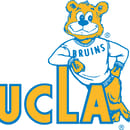Growing up as a woman in our society can be complicated, awkward or painful. There’s the difficulty of “finding yourself” when there is so much pressure to be accepted by your peers, the pain of navigating friendships and relationships when everything is changing and the confusion of realizing that everything you used to care about doesn’t matter so much after all. The following four films accurately portray all these emotions that young girls face when coming of age.
- Lady Bird
-
Lady Bird is one of my favorite movies of all time. The main character, Lady Bird, portrayed by Saoirse Ronan, is an incredibly realistic depiction of a teenage girl about to graduate. She desperately wants to escape her hometown to find somewhere with “culture” to become a writer, and fails to appreciate the hardships that her family goes through to satisfy her. When she falls into a romantic relationship with musician Kyle, she feels pressured to appear aloof and rich like him and his friends, forgetting her true friends and values. However, her brief romances throughout the film never become the main relationship. The film instead focuses on her friendship with Julie and her relationship with her mother. The film is unapologetic in its representation of Lady Bird’s very real flaws, ones that we all struggle with, but it reminds us not to romanticize the things we don’t have and instead remember to cherish what we do.
- Little Women
-
The coming-of-age genre is perfect for the powerful duo of Greta Gerwig and Saoirse Ronan. In Little Women, Saoirse plays yet another young aspiring writer, Jo. The film follows Jo and her sisters as they all grow up and move away from their quaint family home. When she moves to the city, Jo struggles to reconcile her need to prove her independence with her desperate loneliness and desire to be loved. Her younger sister, Amy, is initially spoiled, immature and selfish, but it is clear by the end of the film that she simply understands the importance of money and knows how to take advantage of her femininity to get it. The oldest of the sisters, Meg, makes an important statement that her dreams of a humble, domestic life are no less valid than Jo’s dreams of being a self-reliant writer. Little Women is different from most films in that it does not succumb to cheesy statements about feminism and what women should want, but rather is an acceptance and celebration of all women with drastically different dreams.
- Booksmart
-
This film follows two best friends, Molly and Amy, on the night before graduation as they attempt to make up for all the fun they missed out on while studying for college. When they discovered that all the kids they assumed were delinquents who just messed around all the time actually got into college and had real ambitions and real feelings after all, their worlds were turned upside down. Both girls pride themselves on being feminists, a movement that often emphasizes the need for women to be seen as just as capable and multidimensional as men. However, Molly and Amy fail to recognize these traits in their peers. Booksmart is sympathetic to all its characters and makes it clear how silly high school stereotypes really are. It doesn’t shy away from how dumb teenagers can be, but doesn’t shame them either. To Booksmart, growing up is about getting a little less dumb and realizing that everyone is more than they seem.
- Eighth Grade
-
Bo Burnham’s first feature film, Eighth Grade, is a horribly awkward, achingly realistic portrayal of a 13-year-old girl about to enter high school. Kayla, the protagonist, doesn’t have many real friends in middle school. She is quiet and unseen, but uses her online persona to be the confident girl she desperately wants to be. Her dad and his genuine, though clumsy, attempts to connect with her are rejected in the way parents often are by young teenagers. Eighth Grade hits many important issues for young women: body image, confidence and sexual harassment. It is especially honest in how it illustrates the embarrassing moments that come with growing up, as well as the real pain that it causes.
Figuring out how to survive in our world is hard enough as it is, but it is especially difficult for young girls. These films span a wide range of time, from Little Women in the 1860s to the modern-day Booksmart. Each character faces problems that ring true for a multitude of women. Of course, it is worth noting that the protagonists here are all white, American women. There are things that women of color go through that white women could never relate to. But, the fact is that there aren’t many coming-of-age films centering around young women of color. The genre needs it, desperately. For now, though, these films do the job.



